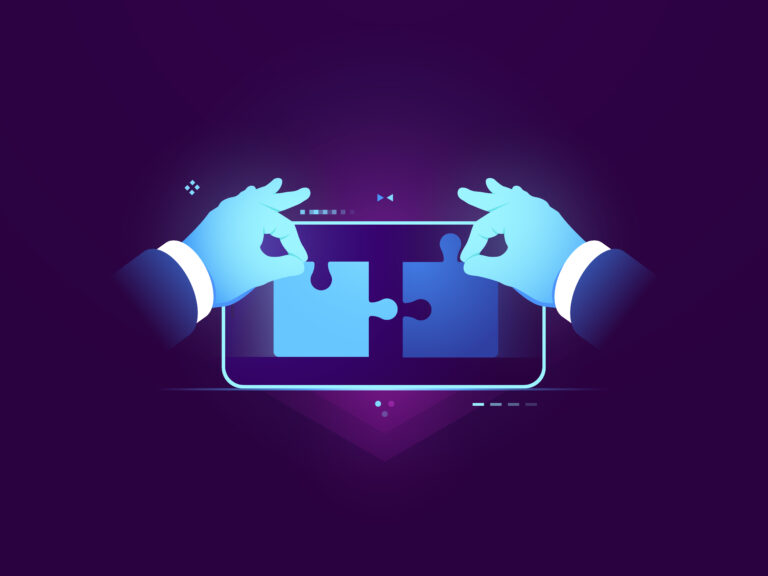I love a good story. It creates context for our relationships. This short video made by Disney is a great example of what storytelling can do for your brand. It creates an incredible way for us to connect. But it also does something that I think we often overlook. It makes us human. In today’s marketplace we are inundated with content. The famous quote from Bill Gates stating that content would indeed rule and be the single most important aspect of the internet has for the most part, come true. As marketers we have taken the baton and run with it. We’re producing content at a breakneck pace, and in large part, it’s content that someone, somewhere has already written. But does it humanize us?
This problem isn’t new. For over a decade, marketers have been trying to determine how to make our content stand apart. We’ve written from different perspectives, we’ve wrapped it in creative call-to-actions and tried to engage our audience explaining why our content is more unique and valuable than the other guys. So how do we stand apart? How does our content rise above the rest?
We need to think differently. We need to start being human. Let’s imagine that all the web’s content is represented by a city. What brings that city to life? It’s people. When we think of our hometown, we think in context of our personal relationships and experiences. We don’t think of the data (i.e. population or square miles). We think of the high school we went to and the crushes we had. We think of our first job and how tough the manager was. These stories provide the context for the city.
Principles to Humanize Marketing Automation
If we recognize that storytelling humanizes us and is a vital ingredient to our marketing efforts, how do we incorporate it into our marketing automation processes?
- Become a farmer: Many of the expectations placed on sales and marketing teams is about quantity vs. quality. Skills are often based on the ability to convert or win. These terms immediately describe an “us vs. them” mentality. This is not how we build relationships. In a post written by Sean Jackson, he describes the value of thinking like a farmer vs. a salesperson.
“But the farmer has a major advantage over the hunter. While the hunters must go into new territories each day to stalk their prey, farmers stay in one place, planting new seeds and reaping the fruits of their efforts on the same ground they have toiled over already. In return, the land they till becomes infinitely more valuable because it can consistently reap a harvest without the hits and misses of hunting.”
You’ve likely heard the phrase lead nurturing? It’s marketing speak for building relationships. It’s staying in one place, listening to your customers and adding value by meeting their needs at each stage of the buying journey. But we can’t accomplish this by trying to “hunt for sales”, this must be done by building trust over time, adding value at each step.
- The power of empathy: Many articles have been written about the power of empathy in business. To think like a customer means that we have walked in their shoes. This goes beyond understanding the buying journey or the customer need. When we have walked in our customers shoes, we connect with them on a personal level. We are far more understanding of their needs when we understand their story. Michael Hinshaw states this about the customer experience:
“Several studies back up the fact that no matter who your customers are (B2B or B2C), there’s a high price to pay for delivering a poor customer experience. The thing is, customer experience is really based on how your customers feel. And one of the best ways to make them feel better about the experience is to listen them, understand their concerns, and deliver empathetic service across multiple touchpoints.”
So delivering a positive customer experience is more than simply knowing what kind of product they use. It’s having knowledge about how and why they use it. If you sell shampoo, you need to know what kind of hair they have, why they chose the shampoo, then deliver value around the entire experience. What do they need before, during and after they shampoo their hair? This information helps create customer empathy. When we deliver this kind of content via our automation processes, it will show that we have listened and seek to provide real value along the way.
- Getting personal: In his latest book X: The Experience When Business Meets Design, Brian Solis outlines the importance of the customer experience. It’s going beyond the data. It’s about getting personal.
“Big data provides great information about customers’ interests, personal and professional networks, location, and many other characteristics. But creating meaningful experiences requires us to get more personal than just mining data. One of my least favorite expressions is, “It’s not personal; it’s only business.”
This is where the rubber meets the road. Data gives us a limited view of our customers. It shows us open rates, but doesn’t reveal intent. It shows us downloads, but doesn’t indicate purpose. We must take the additional step to “micro-mine” the data. How do we do that? We must be curious. We must gather valuable insights. What are your customers interests, values and opinions? “Data storytellers” (or analysts) have the unique ability to reveal information that do reveal incredibly accurate stories about our audience. Gathering and listening to these stories will help us further humanize our content and create experiences that are meaningful and personal.

The Tactics of Humanization
In order to humanize our marketing automation efforts we must critically look at each interaction during the customer experience as it relates to our communications and determine how we humanize it. Here are a few thoughts to get you started.
- Be Relational: This goes without saying. Create an experience where your customer sees you as a real live person, not a large organization or automated system. Use the proper tags (first name, etc.) from your automation system to relate to your audience. If your customers all have a specific kind of goldfish, then tell them that you are running a special for that kind of goldfish. Speak in an authentic personal tone. Business speak will get you a one way ticket to Irrelevant-ville.
- Segmentation: Another way to humanize our marketing automation is to use one of the most powerful tools in our automation toolbox, segmentation. When we cast a broad net with our marketing and communication, it robs us of our ability to be relevant. Take the time to segment your audience into very specific groups. This will allow you to create communications that are personal and relevant. When we can provide very targeted messages that relate to our customers on a personal level, it will feel human.
- Logical Campaign Flow: This can be tricky. Now that we have this shiny new automation system, it’s tempting to automate our every interaction. But proceed with caution. Remember what it feels like to be the customer. If they don’t answer your email, then sending them another one the next day, is not good relationship building practice. Step back and consider the buying journey. At what steps are decisions being made? When does it make sense to re-engage your audience? Take time to ask some of your existing customers about their journey.
- Consider the Entire Customer Experience: The best way to add value and relate to your customer is to acknowledge them not only before and during the sale, but after it as well. Too often our marketing efforts stop at the cash register. Don’t allow the dollar signs to get in the way of delivering exceptionally personal experience by following up. Are there other areas of the customer experience you can add value to? How did their experience with your product or service go? Were they satisfied?
This is not an easy task. It takes an immense amount of time to walk in the shoes of your customer. From the moment they discover the need, all the way through the moment their need is met, and beyond. But just as any relationship takes time to develop, so does automating your marketing. Marketing Automation is still relatively new. While the systems are vast, there is a simple philosophy that your team should adhere to before generating the campaigns, emails and landing pages that will capture your audience’s attention. It’s the philosophy of making every interaction human.



